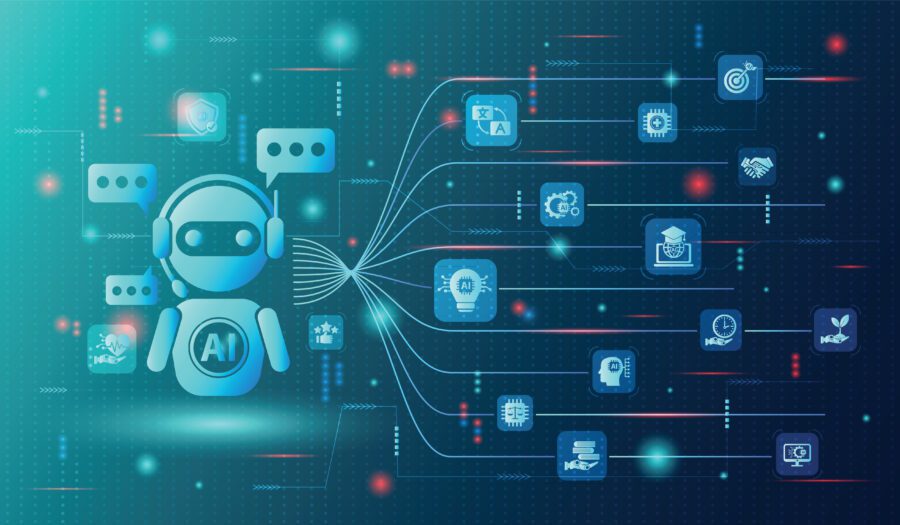
Across the tech sector, the term ‘AI agent’ has become Silicon Valley’s latest Rorschach test—revealing more about the speaker’s worldview than any shared technical definition. Across Fortune 500 companies, I’ve seen CTOs, CMOs, business leaders, and AI researchers invoke the phrase to mean radically different things—a linguistic inkblot that’s already draining millions through misaligned investments. This isn’t just a matter of semantics: as enterprises pour billions into so-called agentic AI systems, the widening gap between marketing promises and actual capabilities risks derailing digital transformation efforts across entire industries.
Three competing visions of AI agents
1. The business executive’s agent: Your new digital workforce
For C-suite leaders and business strategists, AI agents represent the holy grail of operational efficiency: intelligent systems that seamlessly handle customer interactions, automate complex workflows, and scale human expertise. These executives envision AI-powered customer service representatives conducting natural phone conversations, resolving complaints with empathy and precision, and executing sophisticated robotic process automation (RPA) that goes far beyond simple rule-based tasks.
This vision isn’t entirely fantastical. Companies like Klarna report their AI assistants now handle two-thirds of customer service inquiries, equivalent to 700 full-time agents. Yet the gap between these implementations and true autonomous decision-making remains vast.
2. The developer’s agent: Anthropic’s MCP revolution
Technical teams have rallied around a different definition, largely shaped by Anthropic’s Model Context Protocol (MCP)—a framework now being adopted by OpenAI and other major players. MCP agents are sophisticated connectors that allow large language models to interface with external systems, databases, and APIs.
Think of MCP as the nervous system connecting an AI’s brain to the digital world’s muscles and sensors. These aren’t autonomous entities but rather intelligent bridges that expand an LLM’s capabilities by giving it access to real-time data, enterprise systems, and specialized tools. While powerful, calling these interfaces “agents” stretches the definition beyond recognition—it’s like calling a keyboard an author because it enables writing.
3. The researcher’s agent: True autonomous systems
Research institutions, leading tech companies’ R&D departments, and analyst firms like Gartner and Forrester focus on what they term “autonomous agents”—the most ambitious and potentially transformative interpretation. These are independent software modules capable of making decisions without human oversight, learning from their environment, and adapting their strategies in real-time.
Picture microservices infused with large language models: independent, goal-oriented entities that can reason, plan, and execute complex multi-step processes. Unlike traditional microservices with predictable input-output relationships, these agents operate with inherent uncertainty, making probabilistic decisions that can surprise even their creators.
Autonomy without accountability is high risk
The autonomous agent frameworks emerging from research labs promise to decompose complex business challenges into orchestrated workflows where specialized agents collaborate like members of a highly skilled team. An autonomous procurement agent might negotiate with supplier agents, while risk assessment agents evaluate contracts, and compliance agents ensure regulatory adherence—all operating at machine speed with minimal human intervention.
Yet this promise comes with sobering risks. Autonomous agents making independent decisions in financial markets, healthcare systems, or critical infrastructure could cascade errors at unprecedented speed and scale. The “flash crash” events in algorithmic trading offer a preview of what ungoverned autonomous agents might unleash across broader domains.
Enter knowledge graphs: The path to accountable autonomy
This is where knowledge graphs emerge as the crucial governance layer for autonomous agents. By providing a structured, auditable representation of relationships, constraints, and decision pathways, knowledge graphs transform black-box AI agents into accountable systems with explainable reasoning chains.
Knowledge graphs act as both the memory and conscience of autonomous agents, maintaining:
- Contextual Awareness: Understanding relationships between entities, historical patterns, and business rules.
- Decision Lineage: Tracking the reasoning path behind every autonomous action.
- Constraint Enforcement: Ensuring agents operate within defined ethical, legal, and business boundaries.
- Learning Integration: Updating the knowledge base with new insights while preserving institutional knowledge.
5 rules for governing autonomous agents
Forward-thinking enterprises are already implementing accountable agent architectures that combine the power of LLMs with the structure of knowledge graphs. Here’s how industry leaders are approaching this challenge:
- Define clear autonomy boundaries: Establish explicit zones where agents can operate independently versus areas requiring human oversight.
- Implement semantic governance: Use knowledge graphs to encode business rules, compliance requirements, and ethical constraints that agents must respect.
- Create audit trails: Ensure every agent decision links back to specific nodes and relationships in the knowledge graph, enabling post-hoc analysis and continuous improvement.
- Enable dynamic learning: Allow agents to propose updates to the knowledge graph, subject to human review or automated validation rules.
- Foster agent collaboration: Design multi-agent systems where specialized agents work together, with the knowledge graph serving as their shared source of truth.
Building agents businesses can trust
As we stand at the threshold of the agentic AI era, the organizations that thrive won’t be those with the most autonomous agents, but those with the most accountable ones. Knowledge graphs aren’t just a technical solution—they’re the foundation for building AI systems that businesses can trust, regulators can oversee, and society can embrace.
The question isn’t whether autonomous agents will transform enterprise operations—it’s whether your organization will implement them with the accountability and governance structures necessary for sustainable success. In the race toward AI autonomy, the winners will be those who remember that with great algorithmic power comes the need for even greater algorithmic responsibility.
Companies that successfully implement accountable autonomous agents will gain significant competitive advantages: the efficiency of automation combined with the trust and transparency required for mission-critical applications. Early adopters in financial services report 40% reductions in decision-making time while maintaining complete regulatory compliance through knowledge graph-based audit trails.
